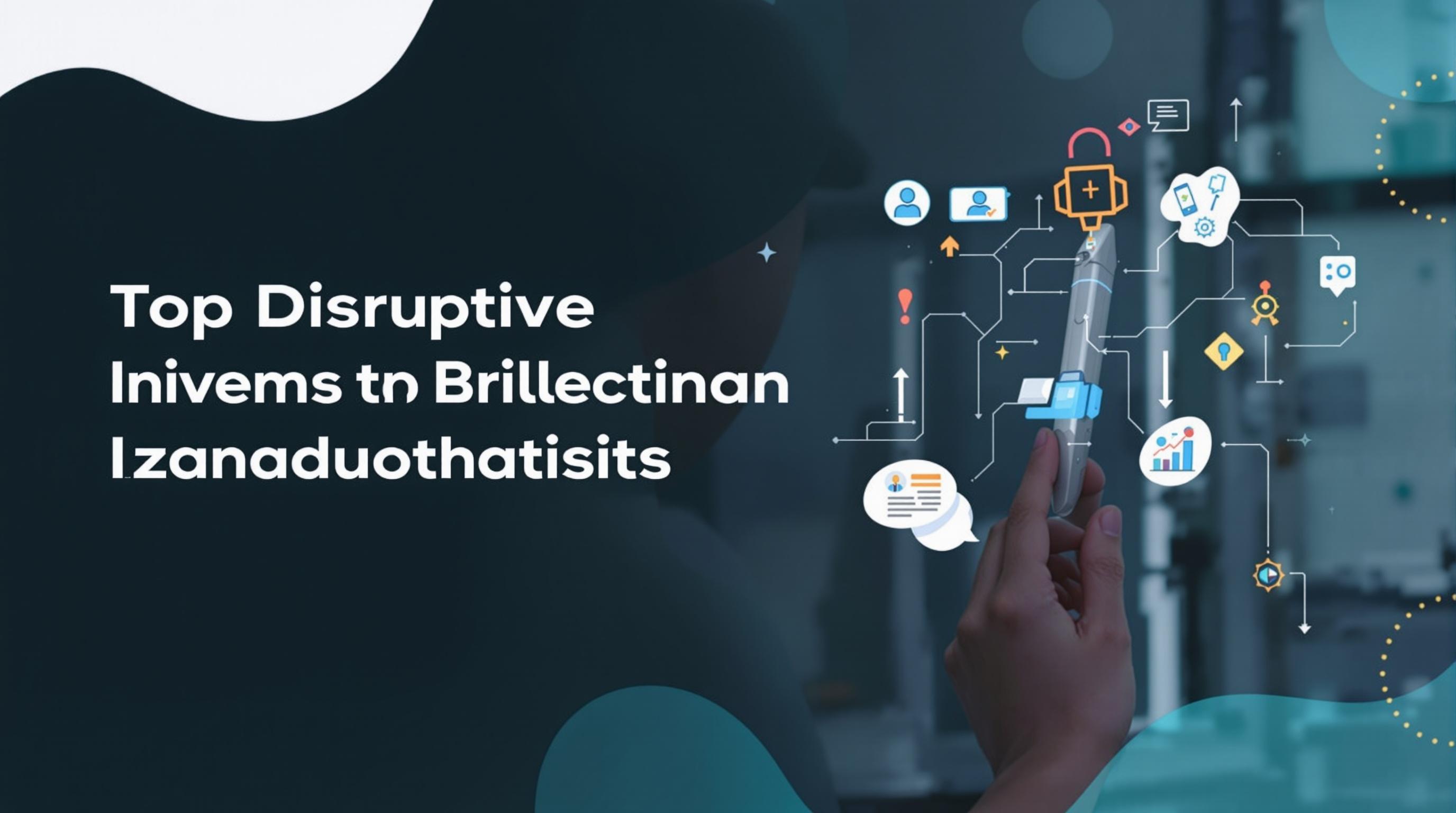Related Articles
- How Emotional Spending Biases in Leadership Can Influence Company Financial Transparency and Accountability
- Unveiling the Role of Employee Psychology in Shaping Unexpected Business Budget Outcomes
- Top 6 Disruptive Invoice Platforms Launched Since 2019 Tackling Automation Bottlenecks in Unconventional Ways
- Top 6 Smart Accounting Softwares Since 2019 That Revolutionize Tracking Business Tax Write-Offs
- The Rise of Biometric Authentication in Digital Finance: A New Frontier for Secure Business Transactions
- How Small Nonprofits Leverage Alternative Finance Tools to Navigate Accounting Challenges Off the Radar
Top 8 Next-Gen Platforms Released Since 2019 Transforming Financial Process Efficiency: Expert Comparison & Ranking
Top 8 Next-Gen Platforms Released Since 2019 Transforming Financial Process Efficiency: Expert Comparison & Ranking
Top 8 Next-Gen Platforms Released Since 2019 Transforming Financial Process Efficiency: Expert Comparison & Ranking
In the fast-evolving landscape of financial technology, next-generation platforms have emerged since 2019 to redefine efficiency, accuracy, and user experience. These platforms leverage AI, automation, and cloud-based architectures to streamline complex financial processes. This article provides an expert comparison and ranking of the top eight platforms that are transforming financial operations across industries.
From automated invoice processing to real-time analytics and blockchain integration, modern financial platforms overcome traditional bottlenecks, reduce errors, and enhance compliance. Our evaluation criteria include scalability, ease of integration, user interface, security, and support for emerging regulatory standards. Below we dissect the standout features of these innovative solutions in a structured, analytical manner.
The following sections delve into each platform’s unique capabilities, market impact, and technological edge. By the conclusion, readers will gain a clear understanding of which next-gen platform aligns best with their operational needs and strategic goals. This overview strings together expert insights, industry reviews, and vendor data to bring you a comprehensive resource.
1. FinTechFlow
Launched in late 2019, FinTechFlow has quickly gained traction for its holistic approach to automating end-to-end financial workflows. Its cloud-native architecture and AI-powered decision engine boost processing speeds while minimizing manual intervention.
Experts praise FinTechFlow’s seamless integration capabilities with legacy ERP systems, which reduces disruption during adoption. The platform includes advanced fraud detection tools, maintaining compliance with stringent GDPR and SOX regulations, making it a favorite among multinational corporations.
Industry reviews from Gartner point to FinTechFlow’s superior user experience and robust analytics dashboard, which empower financial teams to make data-driven decisions swiftly. However, initial implementation costs and learning curve have been noted as potential barriers for smaller enterprises.
2. LedgerSphere
LedgerSphere emerged in 2020 as a blockchain-enabled financial platform focusing on transparency and security in transaction processing. The use of distributed ledger technology provides immutable audit trails, critical for sectors such as banking and insurance.
The platform’s modular design caters to customized deployment, allowing organizations to scale particular functions as needed. Furthermore, automated reconciliation features reduce errors and reconcile cross-border payments more efficiently than traditional systems.
According to Forrester’s Q4 2021 report, LedgerSphere’s commitment to cryptographic security and regulatory compliance offers a competitive edge, though somewhat lower adaptability outside financial services was observed. Its ecosystem of partners continues to expand, indicating sustained innovation.
3. CashStream AI
CashStream AI, released in 2021, specializes in leveraging artificial intelligence to optimize cash flow forecasting and liquidity management. Its predictive analytics engine integrates historical data with external economic indicators for forward-looking insights.
The platform’s dynamic dashboards enable treasury teams to simulate scenarios and identify risk exposures in real time. Integration with multiple banking APIs ensures continuous data flow, enhancing responsiveness to market fluctuations.
Peer-reviewed assessments underscore CashStream AI’s high accuracy in forecasting and its ability to reduce working capital constraints. Nevertheless, expert consensus suggests ongoing enhancement in adapting to volatile emerging markets is needed for broader applicability.
4. VaultX Connect
VaultX Connect, introduced in 2019, focuses on secure digital asset management and compliance automation within financial departments. Its encrypted storage and multi-factor authentication measures align with best practices in cybersecurity.
The platform supports integration with compliance databases to automate reporting requirements, greatly reducing manual overhead. Its intuitive user interface facilitates adoption by non-technical users, enhancing departmental collaboration.
Industry analysts attribute VaultX Connect’s rapid adoption in fintech startups to its flexibility and robust security features. However, some critiques point to limitations in handling complex legacy data formats without supplementary tooling.
5. PayNova
PayNova launched in early 2022 as a next-gen payments platform emphasizing seamless processing across multiple currencies and payment methods. Its adaptive routing algorithms reduce transaction costs and latency globally.
Besides payment execution, PayNova integrates compliance checks using AI to detect suspicious activities in real-time. This dual capability aids financial institutions in meeting AML (anti-money laundering) standards more efficiently.
User feedback highlights PayNova’s ease of use and responsive customer service. Nonetheless, experts caution that its relatively short market presence limits long-term reliability data, urging prospective users to pilot thoroughly.
6. OptiLedger
OptiLedger, unveiled in 2020, merges optimized ledger management with AI-driven anomaly detection to enhance transaction accuracy and audit readiness. It is particularly noted for its low-latency performance in high-volume environments.
The platform’s customizable reporting tools and dashboard visualizations support CFOs in monitoring financial health and regulatory adherence quickly. Its API-first design allows integration with a broad array of accounting and ERP solutions.
Recognition from industry watchdogs confirms OptiLedger’s strong security posture and operational resilience. However, smaller firms may find pricing tiers steep, suggesting it’s best suited for mid-to-large enterprises.
7. ReconcileX
ReconcileX, introduced in 2021, tackles the complexity of account reconciliation using machine learning to automate matching and exception resolution. This approach accelerates month-end closes and reduces audit risks.
Notably, ReconcileX supports collaboration with real-time comment threads and task assignment, streamlining communication between finance teams and auditors. Its cloud-based platform integrates easily with popular ERPs and financial software.
Industry experts commend ReconcileX for significantly cutting reconciliation times and enhancing accuracy. Some users, however, point to occasional initial setup challenges requiring vendor support for smooth deployment.
8. ComplianceIQ Suite
ComplianceIQ Suite launched in 2019 aiming to automate regulatory compliance monitoring and reporting in financial operations. Embedded AI continuously scans policies, transactions, and external regulatory updates for conformance.
The suite’s role-based access controls and audit trails provide transparency and accountability, critical in highly regulated environments. Its modular components allow organizations to deploy only necessary functions, minimizing resource consumption.
According to Deloitte’s 2022 Fintech Innovation Report, ComplianceIQ Suite has been lauded for reducing compliance-related costs and errors. Yet, enterprises with extremely complex regulatory needs may require tailored customization beyond off-the-shelf capabilities.
Expert Ranking Summary
Evaluating these platforms across multiple dimensions reveals a clear hierarchy grounded in innovation, usability, and market traction. FinTechFlow and LedgerSphere lead with their advanced AI and blockchain implementations, respectively. CashStream AI stands out in predictive analytics, while PayNova’s payment processing agility is noteworthy.
VaultX Connect and OptiLedger excel in security and scalability, tailoring to regulated sectors and large organizations. ReconcileX offers tangible benefits in reconciliation speed and accuracy, and ComplianceIQ Suite addresses an essential compliance automation niche.
Ultimately, selection hinges on organizational priorities: fintech companies may prioritize blockchain and AI integration, while traditional banks might emphasize security and legacy system compatibility. It is advisable to conduct trials and consider total cost of ownership before finalizing platform adoption.
Conclusion
The last few years have brought remarkable advancements in financial process efficiency harnessed by next-generation platforms released since 2019. These technologies transcend traditional limitations by embedding artificial intelligence, blockchain, and cloud architecture into everyday financial workflows.
Enterprises embracing these tools gain competitive advantages through agility, risk mitigation, and data-driven insights. However, preparatory investment in change management and user training remains important to fully unlock platform potential. By staying informed and strategically selecting appropriate solutions, financial teams can future-proof their operations in an increasingly complex environment.
This analysis, grounded in expert reports from Gartner, Forrester, Deloitte, and user reviews, serves as a foundational resource for decision-makers seeking to enhance financial efficiency with innovation. Continued evolution in this space promises further breakthroughs, making ongoing vendor evaluation essential.




